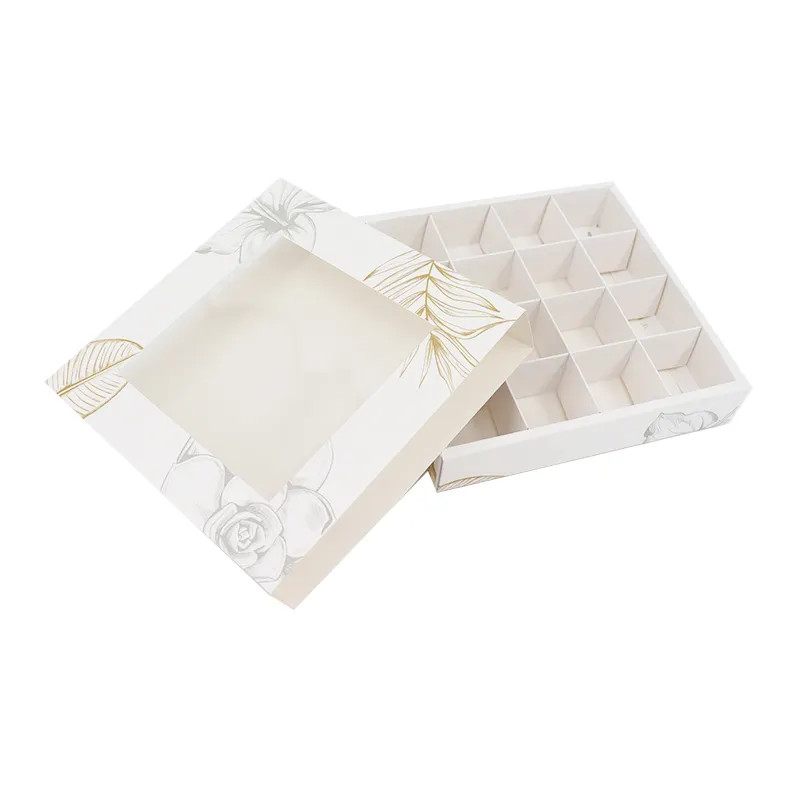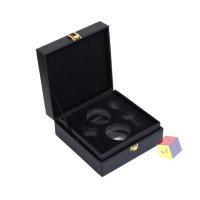Characteristics of Chocolate Bonbon Boxes
1. Aesthetic Appeal
Chocolate bonbon boxes are designed to be visually appealing and
luxurious, enhancing the experience of enjoying fine chocolates.
They often feature high - quality materials such as thick
paperboard or cardboard, which provide a premium feel. The boxes
may be adorned with decorative elements like foil stamping,
embossing, or intricate patterns to create an elegant and
sophisticated look. For example, a box might have a gold - foiled
logo and a velvet - like texture, adding a touch of opulence. The
design often includes clear windows or openings to showcase the
bonbons inside, allowing customers to see the variety of flavors
and colors.
2. Protection
One of the primary functions of chocolate bonbon boxes is to
protect the delicate chocolates from damage and environmental
factors. The boxes are typically made from sturdy materials that
can withstand handling and shipping. They often include cushioning
materials such as tissue paper, foam inserts, or custom - molded
trays to prevent the bonbons from moving around and getting
crushed. For example, a bonbon box might have a molded tray with
individual compartments for each chocolate, ensuring they remain
intact and fresh.
3. Customizability
Chocolate bonbon boxes are highly customizable to meet the specific
needs and branding requirements of different chocolatiers. The
size, shape, and design of the box can be tailored to fit the
bonbons perfectly. The exterior of the box can be printed with the
brand’s logo, product information, and marketing messages. For
example, a chocolatier might choose to print the names of the
bonbon flavors or a special message on the box. The packaging can
also be personalized with special designs for limited - edition
products or seasonal collections, such as a holiday - themed box
with festive colors and patterns.
4. Sustainability
With increasing consumer awareness of environmental issues, many
chocolate bonbon boxes are now designed to be eco - friendly. They
can be made from sustainable materials such as recycled paperboard
or biodegradable materials. Some brands also opt for packaging that
is recyclable or compostable. For example, a bonbon box made from
FSC - certified paperboard ensures that the materials come from
responsibly managed forests. This not only reduces the
environmental impact but also appeals to environmentally conscious
consumers.
5. Practicality
Chocolate bonbon boxes are designed to be practical and user -
friendly. They often feature easy - to - open closures such as
flaps, tabs, or magnetic closures, making it convenient for
customers to access the chocolates. The boxes are also designed to
be compact and lightweight, making them easy to transport and
store. For example, a bonbon box might be designed with a slim
profile to fit easily into a customer’s gift bag or purse. The
boxes can also be easily stacked and displayed on retail shelves,
making them convenient for both retailers and consumers.
6. Brand Promotion
Chocolate bonbon boxes serve as an important tool for brand
promotion. The boxes can be designed to reflect the brand’s
identity and values, creating a consistent and professional image.
For example, a luxury chocolatier might use high - end materials
and elegant designs to convey a sense of sophistication and
quality. The packaging can also be used to include promotional
materials such as discount coupons, brochures, or samples of other
products. This can encourage repeat purchases and increase customer
loyalty.
7. Gift - worthy Presentation
Chocolate bonbon boxes are often designed with gift - giving in
mind. They can be crafted with high - quality materials and
decorative elements such as ribbons, bows, or special finishes to
create an elegant and luxurious presentation. For example, a gift
box for a special occasion might feature a satin ribbon and a
personalized gift card. The boxes can also be designed in various
sizes to accommodate different quantities of bonbons, making them
suitable for both small and large gift sets.














